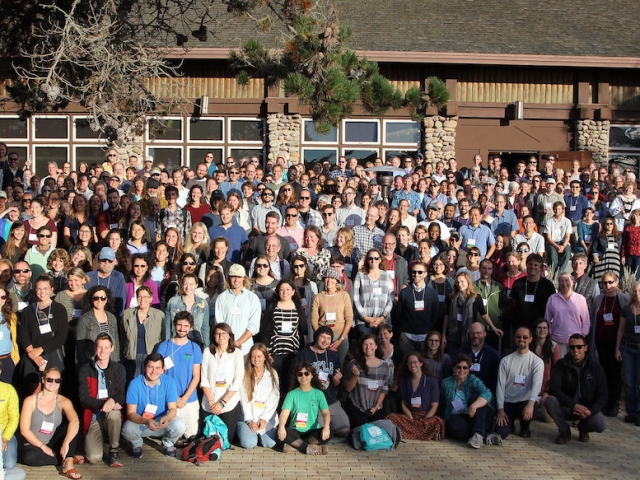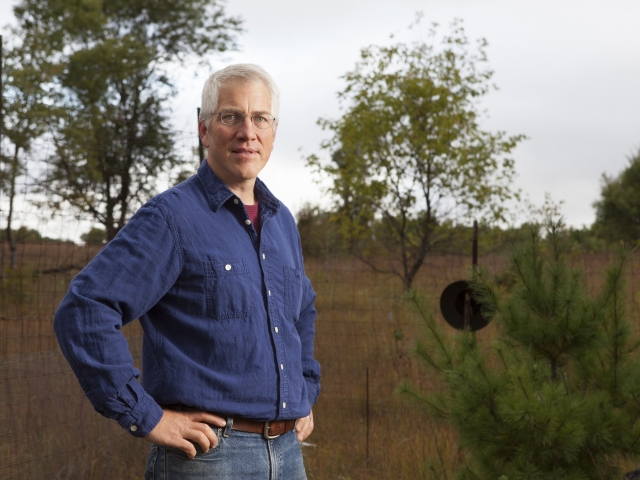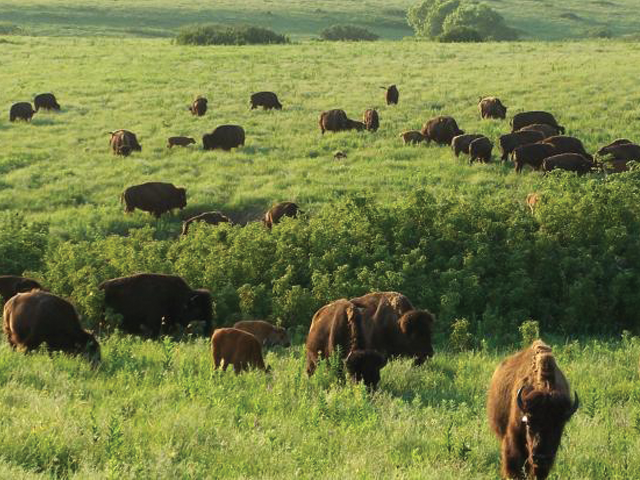Long Term Ecological Research (LTER) Network Office
The hub for synthesis research, education, and outreach activities across a set of 27 ecosystem research programs
The Long-Term Ecological Research (LTER) Network is a set of 27 National Science Foundation-funded research programs located in a wide variety of ecosystems. Because this research relies on collaboration and years of data, NCEAS operates the LTER Network Office, which serves as a hub for LTER synthesis research, education, and outreach activities.
LTER research enables the long-view. Changes such as forest growth, desertification, the rebound of an endangered species, and sea-level rise happen over decades and can often have unpredictable effects. Studying how and why ecosystems change over the long term is essential to managing our natural resources sustainably and ensuring the health and prosperity of our communities.
The Network Office’s programs integrate the science conducted at the individual sites into a robust understanding of how diverse ecosystems function across space and over time. It also ensures scientists, educators, resource managers, and decision makers have greater awareness of and access to this valuable science.
Synthesis Working Groups
The Network Office periodically funds synthesis working groups to expand the scope of LTER science. These teams integrate insights from multiple ecosystems to generate a broader understanding, often with implications for management.
To get notifications of calls for proposals and other LTER news, subscribe to the LTER newsletter.
2017 Working Groups
Synthesizing population and community synchrony to understand drivers of ecological stability across LTER sites
Populations of plants, animals, and microbes fluctuate all the time. Whether populations rise and fall in tandem, independently or alternately can affect ecological stability. Offset fluctuations between species can enhance ecosystem stability. Or alternate fluctuations of the same species in different regions can support species stability. Building on many sources of long-term data, the LTER Synchrony working group aims to understand the drivers and timescales of synchrony and its effect on ecological stability.
Scaling-Up Productivity Responses to Changes in Biodiversity
It seems like a simple question. Does biodiversity loss cause productivity loss? Most experiments to test the question are done on small plots. Scaling up to natural ecosystems introduces complications that could tip the balance toward a stronger—or a weaker—relationship. Drawing on data from biodiversity experiments at multiple LTERs and global observational and experimental networks, the Biodiversity and Productivity working group asks what role time scales, spatial scales, type of experiment, and ecosystem type have on the strength of this key relationship.
Advancing soil organic matter research: Synthesizing multi-scale observations, manipulations & models
This working group is synthesizing soil organic matter data across 15 LTER sites and also includes data and participants from Critical Zone Observatory (CZO) sites, Detrital Input and Removal Treatments (DIRT) Network, and Nutrient Network (NutNET). The group’s goal is to refine and evaluate soil organic matter stabilization theories and to produce a dataset that encompasses the impact of experimental manipulations on soil organic matter at different sites.
2016 Working Groups
Global Patterns in Stream Energy and Nutrient Cycling
The working group will compare stream chemistry data from 19 sites, representing far-ranging biomes including tundra, desert, and tall-grass prairies, as well as boreal, temperate, and tropical rainforests. They aim to identify what factors affect the coupled breakdown and use of carbon and nitrogen in streams. While carbon and nitrogen are inextricably linked, scientists remain stymied by the considerable spatial and temporal variation in the relationships between the two. The unprecedented global database being assembled by the project will allow the team to examine energy and nutrient cycling across seasons and environmental and management gradients.
A Synthesis to Identify How Metacommunity Dynamics Mediate Community Responses to Disturbance Across the Ecosystems Represented in the LTER Network
What factors impact the stability of ecosystems? Previous research has identified dispersal, niche differentiation, and habitat heterogeneity as crucial parameters that determine metacommunity dynamics and stability in response to disturbance. Researchers do not know, however, whether these factors confer stability over long time scales or across ecosystem types. Using LTER datasets, the working group will assess how well these parameters estimate stability across time and space–and in the process, identify the major predictors of metacommunity stability.
Integrating Plant Community and Ecosystem Responses to Chronic Global Change Drivers: Toward an Explanation of Patterns and Improved Global Predictions
Many global change drivers (GCDs) lead to chronic alterations in resource availability, and scientists anticipate that the magnitude and direction of ecosystem responses to these changes will be non-linear. To predict responses to GCDs across a wide variety of ecosystems, the working group will take advantage of 101 similar experiments done across 17 LTER sites, all of which have examined plant community responses to changes in resource availability. The group aims to discover whether changes in plant community structure, productivity, and carbon storage are predictive of shifts in ecosystem function.








